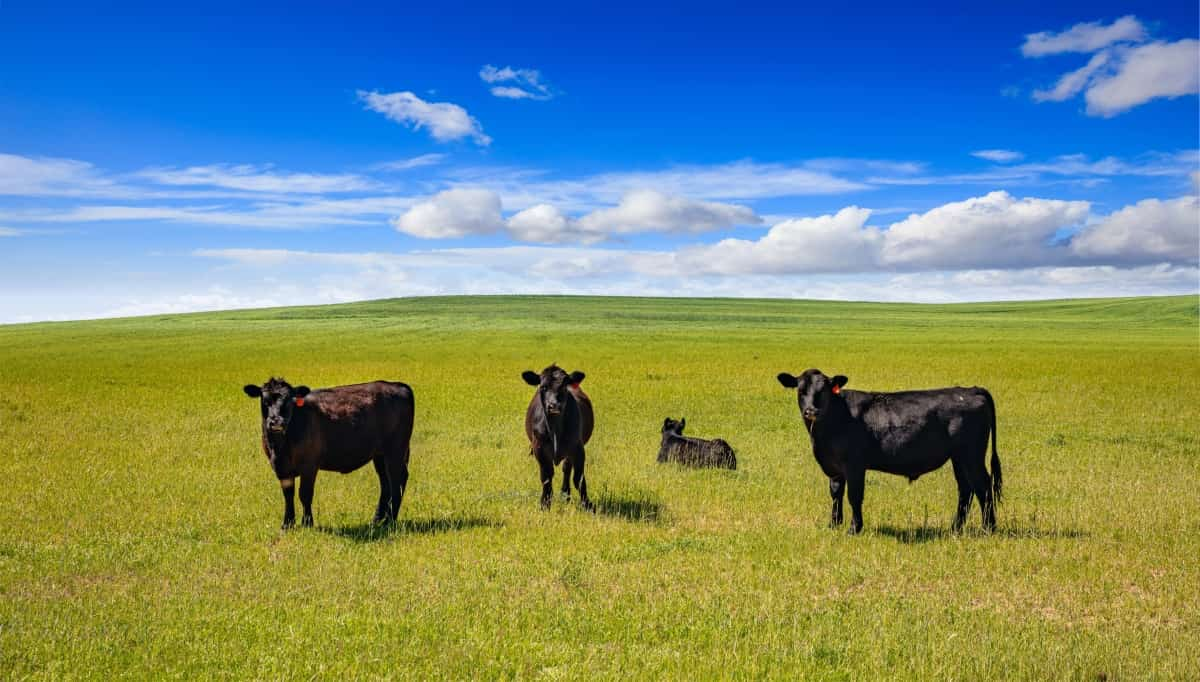In the evolving landscape of environmental sustainability, ranchers stand at the forefront of a unique opportunity to tap into the green economy through carbon market participation. With the growing emphasis on reducing the global carbon footprint, agricultural carbon sequestration has become a vital component of the climate solution puzzle.

Here we learn the intricacies of carbon credits for ranchers, exploring how sustainable ranching practices, such as soil carbon storage and grassland restoration, can generate environmental credits and open up new revenue streams. By engaging in carbon market platforms and embracing regenerative agriculture, ranchers can contribute significantly to carbon offset projects while reaping financial benefits.
Carbon Market Opportunities for Ranchers
Understanding Carbon Markets
Introduction to Carbon Credits and Trading
Carbon credits and trading represent a mechanism where businesses or individuals offset their carbon emissions by purchasing credits from entities that have successfully reduced their carbon footprint. In ranching, this involves practices that enhance carbon storage in soil and vegetation, turning ranches into valuable players in the carbon market. By participating in carbon trading for farmers and ranchers, these stewards of the land can sell credits generated through their conservation efforts, contributing to a larger goal of environmental sustainability.
The Role of Agriculture in Carbon Sequestration
Agriculture, particularly sustainable ranching and regenerative farming, is crucial in carbon sequestration, capturing CO2 from the atmosphere and storing it in soil and plant biomass. Techniques such as rotational grazing, grassland carbon sequestration, and wetland restoration on ranch land improve soil health and biodiversity and contribute to significant carbon storage, positioning agriculture as a key sector in combating climate change.
Basics of Carbon Credits for Ranchers
How Carbon Credits Are Generated on Ranches
Carbon credits on ranches are generated through practices that enhance the land’s ability to sequester carbon, such as sustainable livestock management, soil carbon storage through improved ranching practices, and the restoration of native grasslands. These activities increase the amount of carbon stored in the ecosystem, creating carbon offsets that ranchers can quantify and sell as credits to individuals or companies looking to mitigate their carbon emissions, providing a financial incentive for environmentally friendly ranch management.
The Process of Carbon Credit Certification
For ranchers to sell carbon credits, their sequestration efforts must be verified and certified by recognized carbon credit certification bodies. This process involves rigorous assessment of the ranch’s carbon sequestration practices, ensuring they meet specific standards and result in verifiable, real, and permanent carbon storage. Certification legitimizes the environmental benefits of a rancher’s sustainable practices and allows them to participate formally in carbon markets, selling their credits to buyers seeking to offset their carbon emissions.
Sustainable Ranch Management Practices
Implementing Rotational Grazing for Carbon Sequestration
Rotational grazing is a cornerstone of sustainable ranching, optimizing grassland health and enhancing soil carbon sequestration. Moving livestock between pastures to prevent overgrazing encourages the growth of diverse plant species, leading to deeper root systems and increased soil organic matter, both of which are key for storing carbon. This sustainable approach not only improves the productivity and health of the land but also contributes to the ranch’s carbon sequestration capabilities.
Restoring Grasslands and Wetlands
Restoring degraded grasslands and wetlands is another effective strategy for ranchers to increase their land’s carbon storage potential. These ecosystems are highly efficient at sequestering carbon, and by rehabilitating them, ranchers can enhance biodiversity, water retention, and soil health, further contributing to the fight against climate change. These restoration efforts can be integrated into carbon offset projects in ranching, generating environmental credits that can be sold on the carbon market.
In case you missed it: Zero-Carbon Agriculture: How to Achieve Carbon Neutral Farming

Technology and Carbon Sequestration
Innovative Tools for Monitoring Soil Carbon
Advancements in technology have provided ranchers with innovative tools for accurately monitoring soil carbon levels, which is essential for participating in carbon markets. These tools range from sophisticated soil sampling techniques to remote sensing and data analytics, offering precise measurements of the carbon sequestered through various ranching practices. This technology is pivotal in verifying carbon sequestration efforts and certifying carbon credits, making it easier for ranchers to contribute to and benefit from carbon markets.
The Importance of Data in Carbon Markets
Data plays a crucial role in carbon markets, providing the evidence to verify and quantify the carbon sequestered on ranches. Precise data collection and analysis are vital for certifying carbon credits, guaranteeing that ranchers receive due recognition and compensation for their environmentally sustainable practices in the market. This data-driven approach helps build trust and transparency in carbon trading, facilitating the growth of carbon market opportunities for ranchers.
Carbon Market Platforms and Partnerships
Choosing the Right Carbon Trading Platform
Selecting the appropriate carbon market platform is crucial for ranchers looking to sell carbon credits. These platforms act as intermediaries, connecting credit sellers with buyers and providing the infrastructure for trading. When choosing a platform, ranchers should consider factors like ease of access, transparency, trading fees, and the platform’s track record in supporting agricultural carbon credits, ensuring they find a partner that aligns with their goals and values.
Forming Partnerships with Environmental Organizations
Partnerships with environmental organizations can provide ranchers valuable support in navigating the carbon market. These organizations can offer expertise in sustainable ranching practices, carbon credit certification, and market trends, helping ranchers maximize their participation in carbon markets. Collaborations can also open doors to additional funding and resources for implementing carbon sequestration projects, enhancing ranchers’ environmental and financial benefits.
Financial Benefits of Participating in Carbon Markets
Revenue Streams from Selling Carbon Credits
Carbon markets offer ranchers a new revenue stream by selling carbon credits. By monetizing the carbon sequestered through sustainable ranch management practices, ranchers can generate additional income, providing a financial incentive to adopt and maintain environmentally friendly practices. This revenue supports the ranch’s operations and reinvests in further sustainability initiatives, creating a virtuous cycle of environmental stewardship and economic gain.
Investment in Sustainable Practices and Long-Term Gains
Investing in sustainable ranching practices contributes to carbon sequestration and leads to long-term financial gains. Improved soil health, enhanced ecosystem services, and increased biodiversity can boost the ranch’s productivity and resilience, reducing costs and increasing profitability over time. The initial investment in sustainable practices, supported by revenue from carbon credits, sets the foundation for a sustainable and profitable ranching operation.
Challenges and Considerations
Understanding Market Volatility and Price Risks
Navigating the carbon market comes with challenges, including market volatility and price risks. Ranchers must stay informed about market trends and fluctuations in carbon credit prices to make strategic decisions about when to sell their credits. Understanding these market dynamics is crucial for maximizing revenue and ensuring the financial viability of participating in carbon markets.
Navigating Regulatory and Compliance Requirements
Participating in carbon markets requires ranchers to navigate a complex landscape of regulatory and compliance requirements. From carbon credit certification to adherence to environmental regulations, ranchers must ensure their practices meet all necessary standards. Staying informed and compliant secures their place in the carbon market and upholds the integrity and environmental benefits of their sustainable ranching practices.
In case you missed it: Agriculture Infrastructure Subsidies for Indian Farmers

Case Studies: Success Stories from the Field
Ranchers Who Have Successfully Entered Carbon Markets
Success stories from ranchers who have entered carbon markets are inspiring examples of how sustainable practices can lead to environmental and financial benefits. These case studies highlight ranchers’ diverse approaches, from implementing advanced soil carbon sequestration techniques to forming strategic partnerships, demonstrating the potential for ranches of all sizes to contribute to and benefit from carbon markets.
Lessons Learned and Best Practices
The experiences of ranchers in carbon markets offer valuable lessons and best practices for others looking to follow in their footsteps. Key points to note involve the significance of comprehensive planning, the advantages of embracing a holistic sustainability strategy, and the necessity for ongoing learning and adaptation. These insights can guide new participants in navigating the complexities of the carbon market, enhancing their chances of success.
Future Trends in Carbon Markets for Agriculture
Emerging Opportunities and Technological Advances
The future of carbon markets for agriculture is bright, with emerging opportunities and technological advances poised to enhance participation and benefits for ranchers. Innovations in carbon sequestration technology, data analytics, and market platforms are expected to streamline generating and selling carbon credits, making it more accessible and profitable for ranchers committed to sustainable practices.
Policy Developments Affecting Agricultural Carbon Credits
Policy developments play a significant role in shaping the landscape of agricultural carbon credits. Changes in environmental regulations, incentives for sustainable farming, and support for carbon market participation can significantly impact the opportunities available to ranchers. Staying informed about policy trends and advocating for supportive measures can help secure a favorable environment for the growth of agricultural carbon markets.
Getting Started: Steps for Ranchers
Assessing Your Ranch’s Potential for Carbon Credits
The first step for ranchers interested in exploring carbon market opportunities is assessing their ranch’s potential for generating carbon credits. This involves evaluating current practices, identifying improvement areas, and estimating their land’s carbon sequestration potential. Seeking expert advice and utilizing available tools and resources can aid in this assessment, laying the groundwork for successful carbon market participation.
Steps to Develop and Sell Carbon Credits
Developing and selling carbon credits involves steps from implementing sustainable practices and documenting their carbon sequestration impact to obtaining certification and engaging with carbon market platforms. Each step requires careful planning and execution, focusing on meeting market standards and maximizing participation’s environmental and financial benefits. With the right approach and support, ranchers can unlock the potential of carbon markets, contributing to climate change mitigation while enhancing their operations.
In case you missed it: 10 Benefits of Drone Sprayers in Agriculture

Conclusion
Ranchers have a unique opportunity to contribute to climate change mitigation and unlock new revenue streams by participating in carbon markets through sustainable practices and carbon sequestration. Embracing this green economy supports environmental sustainability and promotes the financial viability and resilience of ranching operations.
- Feed Your Flock for Less: Top 10 Tips to Save on Chicken Feed
- Ultimate Guide to Ossabaw Island Hog: Breeding, Raising, Diet, and Care
- Hatching Answers: The Top 10 Reasons Your Chickens Aren’t Laying Eggs
- Eggs and Economics: Breaking Down the Cost of Raising Backyard Chickens
- Defend Your Greens: Proven Methods to Keep Iguanas Out of Your Garden
- Ultimate Guide to Cinnamon Queen Chicken: A Comprehensive Guide for Beginners
- Ultimate Guide to California Tan Chicken: Breeding, Raising, Diet, Egg-Production and Care
- Ultimate Guide to Marsh Daisy Chicken: Breeding, Raising, Diet, and Care
- 10 Types of Chicken Farming Businesses You Can Start for Profits